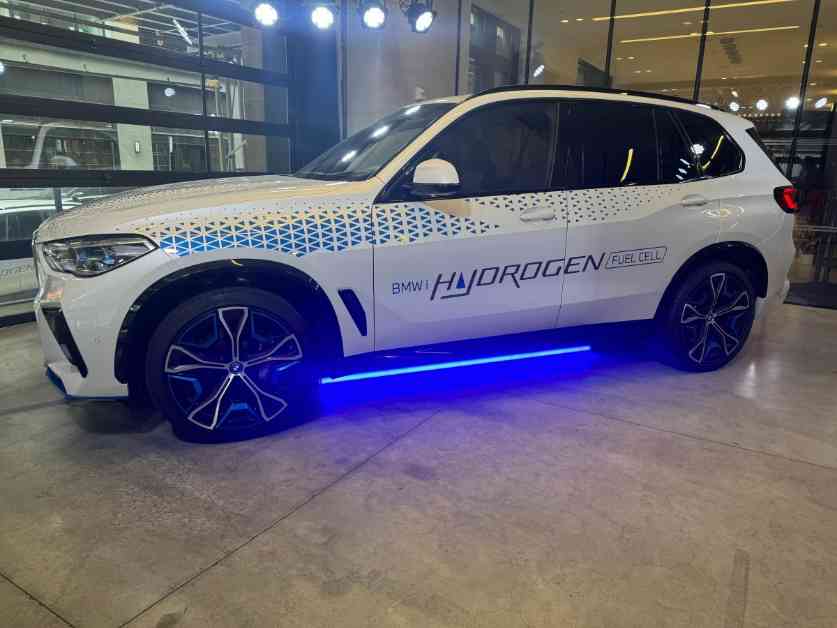BMW, a leading automaker in the industry, is making bold moves towards a zero-emissions future by embracing both battery electric vehicles (BEVs) and hydrogen fuel cell vehicles. Despite the current trend towards BEVs, BMW believes that a mix of both technologies is necessary to meet the needs of all consumers and drive the shift towards sustainable transportation.
BMW’s Partnership with Toyota for Hydrogen Fuel-Cell Cars
In a surprising move, BMW announced plans to collaborate with Toyota to develop a hydrogen fuel-cell consumer car for series production by 2028. This partnership signals BMW’s commitment to exploring alternative fuel options and providing customers with a diverse range of zero-emission vehicles to choose from. While hydrogen technology presents its own set of challenges, BMW is confident that it can complement the growing market of BEVs and offer a unique solution for customers who prefer the convenience of refueling over traditional charging methods.
The Benefits of Hydrogen Vehicles
Juergen Guldner, general project manager of BMW’s hydrogen technology and vehicle projects, highlighted the advantages of hydrogen vehicles during a BMW event at Climate Week NYC. He emphasized that hydrogen vehicles could offer a “best of both worlds” scenario, combining the benefits of electric driving with the convenience of refueling similar to traditional gasoline cars. This hybrid approach aims to cater to a wider range of consumers and encourage the adoption of zero-emission vehicles on a larger scale.
Jason Munster, principal and founder of hydrogen consulting firm CleanEpic, echoed Guldner’s sentiments by emphasizing the cost-effectiveness and sustainability of a mix of BEVs and hydrogen fuel cell vehicles. Munster pointed out that the growing number of BEVs on the grid could lead to an increase in marginal costs, making a diversified approach more favorable in the long run. By incorporating hydrogen technology into the mix, automakers like BMW can offer customers a choice while working towards a greener future.
Challenges and Solutions in Hydrogen Infrastructure Development
While the potential benefits of hydrogen vehicles are clear, there are substantial challenges to overcome in developing the necessary infrastructure. The cost of building out hydrogen infrastructure is a major hurdle, as it lags behind the more established battery electric infrastructure. Additionally, hydrogen production must shift towards renewable sources to truly achieve zero emissions, posing a significant logistical challenge for automakers and policymakers.
Munster and Guldner both emphasized the importance of a coordinated approach to developing the hydrogen ecosystem. Munster cited the example of Toyota’s hydrogen vehicle, the Mirai, in California, where a lack of sufficient fueling stations hindered the adoption of the technology. He stressed the need for collaboration among all stakeholders, including production, distribution, and end-use, to ensure the success of hydrogen fuel cell vehicles in the market.
BMW is actively working on building out the hydrogen ecosystem by partnering with commercial fleet customers and testing a pilot fleet of hydrogen vehicles in various countries. By engaging with organizations like Urban-X, BMW is seeking to identify companies that can contribute to the hydrogen equation and drive innovation in the field. This proactive approach reflects BMW’s commitment to leading the transition towards sustainable transportation.
The Role of Government Support in Hydrogen Development
The Biden administration’s Inflation Reduction Act (IRA) includes tax credits for clean hydrogen production, aiming to incentivize companies to invest in renewable hydrogen technology. However, Munster highlighted the challenges posed by the current lack of clarity in guidance for IRA hydrogen funding. The stringent criteria for subsidies, including requirements for incrementality, temporal matching, and deliverability, make it difficult for companies to qualify for support and hinder the growth of the hydrogen industry.
Munster proposed more flexible rules that allow for the temporary use of fossil fuels in existing electrolyzers, with the eventual transition to a fully renewable energy ecosystem. This approach could help companies bridge the gap between current infrastructure and future sustainability goals, promoting the gradual adoption of hydrogen technology. The uncertainty surrounding the total amount of the subsidy further complicates companies’ expansion plans and investment decisions in the hydrogen sector.
In conclusion, BMW’s embrace of battery and hydrogen EVs for a zero-emissions future reflects the need for a diversified approach to sustainable transportation. By combining the benefits of BEVs and hydrogen fuel cell vehicles, automakers like BMW can cater to the diverse needs of consumers and drive innovation in the industry. Despite the challenges in developing hydrogen infrastructure and securing government support, BMW remains committed to leading the charge towards a greener future for transportation.











